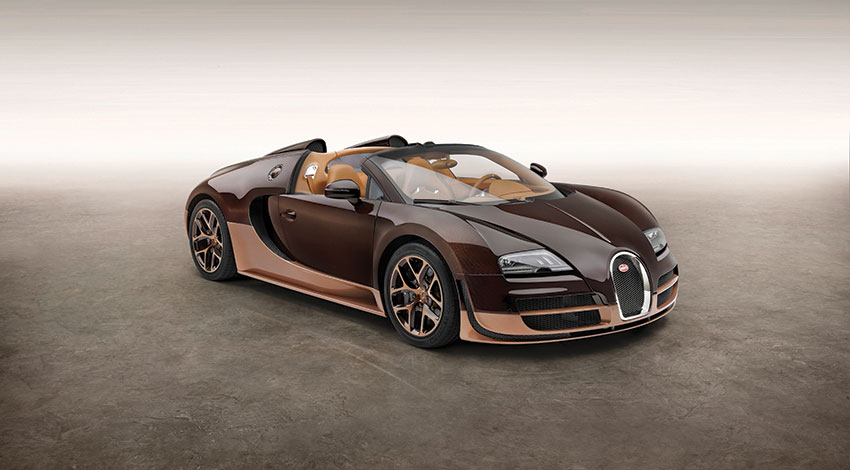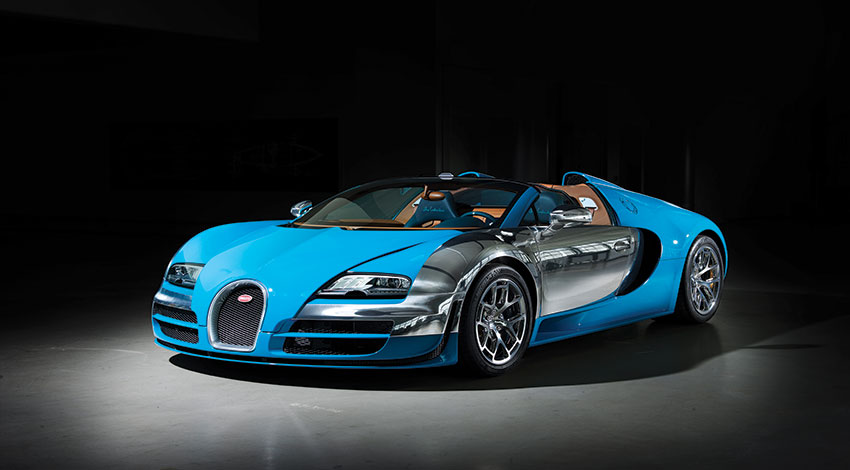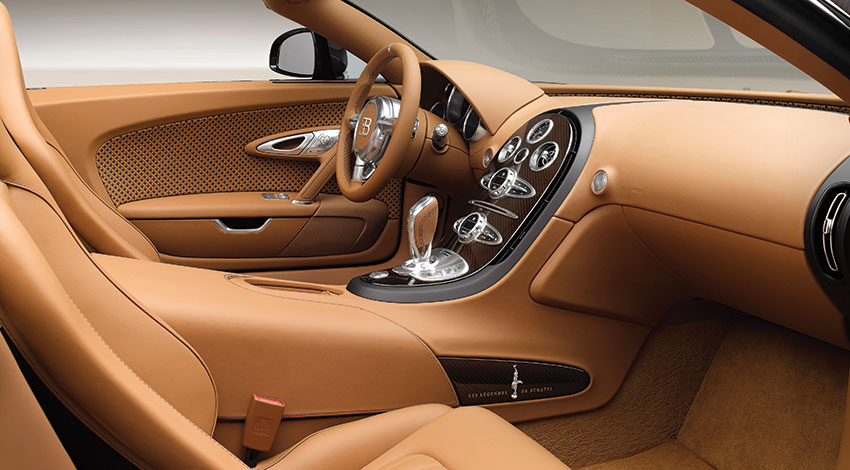Bugatti has been unveiling the latest special editions of its super sportscar. They are called legends and the name couldn’t be more suitable.
Ettore Bugatti considered himself an artist and the whole Bugatti family consisted of talented engineers and genius artists as well. Ettore developed a passion for automotive engineering and founded the brand carrying his name in 1909. He was a perfectionist and believed lightness and mechanical integrity were the principles to success. These two elements produced extraordinary cars and soon Bugatti was racing them at the world’s top events. Twenty years after he set up his factory in Molsheim, Ettore Bugatti saw his Type 35B win the first ever Monaco Grand Prix.
Nevertheless, Bugatti’s greatest achievement came eight years later, when Jean-Pierre Wimille and Robert Benoist endowed the French brand with immortality as winners of the 24 Hours of Le Mans. Wimille became a double winner two years later, this time sharing a Bugatti Type 57S with Pierre Veyron.
Commercial rights to the brand were bought by the Volkswagen Group in 1998, with the goal of building the most spectacular car the world had ever seen. The Bugatti Veyron was presented in 2005 as the most technically and technologically advanced production car ever. It had an 8-litre quad- turbocharged W16 engine with 1001 horse power and drive to all four wheels was made through a seven-speed dual-clutch transmission. Top speed was 408km/h, making it the fastest production car in the world at the time. It also reached 100km/h in 2.46 seconds, 200km/h in 9.8 seconds and 300km/h in just 16.7 seconds. The Veyron instantly became an icon of industrial engineering and car design, but in 2010, Bugatti wanted to show it could go even further and created the Veyron Super Sport. An even more slippery shape and important engine enhancements improved output to a stratospheric 1200 horse power, while top speed was set at 431km/h in Volkswagen’s private test track.
Throughout the Veyron’s life cycle, Bugatti has introduced many different limited special editions, but maybe the last ones are the most interesting. Called Les Légendes de Bugatti, they honour the most important characters in the company’s history. Based on the Grand Sport Vitesse model, which is basically a roadster version of the Super Sport (and, consequently, the world’s fastest roadster), the Legends models comprise three cars per version only. Dr. Wolfgang Schreiber, President of Bugatti Automobiles S.A.S., says “this brand has been in large part defined by outstanding personal i ties and historically resonant moments. We want to tell the story of the brand through these Bugatti Legends, and at the same time create a link between its past and present”. The first Legend model is the Jean-Pierre Wimille. The 1937 car in which he won the 24 Hours of Le Mans for Bugatti for the first time served as inspiration.
The Type 57G Tank appeared in the racing blue colour that traditionally identified French racing cars and it now shines in blue clear-coated carbon fibre and a light Wimille Bleu paintwork finish. The second Veyron to receive the Legend outfit is the Jean Bugatti, son of the founder Ettore Bugatti and creator of the famous Type 57SC Atlantic, one of the most beautiful, rare and expensive cars ever produced. In developing the Jean Bugatti Legend, designers aimed to follow the concept of its predecessor, the Atlantic, or Voiture Noire as Jean used to call it, as closely as possible.
The finish in jet black clear-coated carbon fibre is superb, while the use of platinum on the f amous Bugatti horseshoe grille lends an air of extravagance to the vehicle. Meo Costantini is the third personality to be honoured by the Legends collection. A close friend of Ettore Bugatti, he won the Targa Florio race twice, led the race team and was a prominent driver for the brand. The blue paintwork references France’s classic motor sport colour, as well as the Type 35, while the new Bugatti Dark Blue Sport paint colour has been specially developed for the vehicle. The aluminium parts are hand- polished and coated with clear lacquer and the detail is mesmerising.
The fourth of the six models is dedicated to Ettore Bugatti’s brother, prolific sculptor Rembrandt Bugatti and it is yet another work of art. Achim Anscheidt, the brand’s head designer, explains: “The patina, the soul and the crafted character of his sculptures guided us to the colour and material choices in the Legend car carrying his name.” The Rembrandt is largely composed of bronze-coloured clear-coated carbon, reminiscent of the artist’s favourite material. The car’s lower half is painted in light brown Noix colour, whereas the front grille is built in platinum. Bugatti recently showcased the fifth Legend to the world. Black Bess revives the legend ary Type 18 ‘Black Bess’, a pioneer when it came to street-legal super sports cars, also driven in races by Ettore Bugatti himself.
A new process of hand-painting leather was developed specifically for the Veyron Black Bess, while the finest materials are again used in its lavish interior. The steering wheel evokes memories of the original model, the front grille is built out of 24-carat gold and the carbon fibre body is painted exclusively in black. The result is simply stunning. With one more Legend model yet to be unveiled, Bugatti is approaching the end of the Veyron’s planned 450 units life cycle.
Whatever it may be, the Veyron will forever be one of the most important motor vehicles ever produced and a reminder that human ingenuity is unstoppable and always surprising.

















